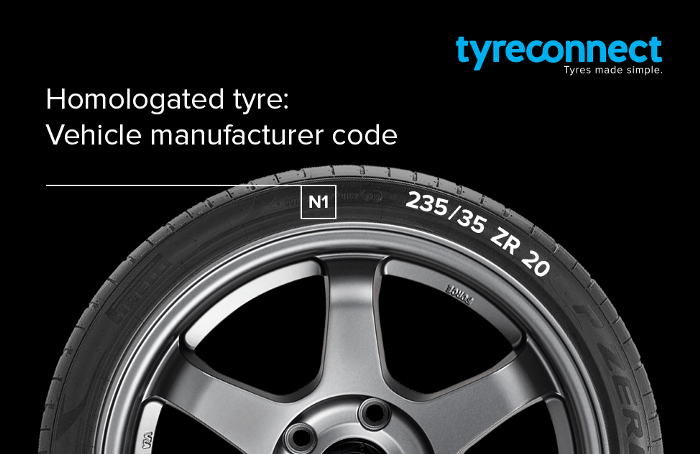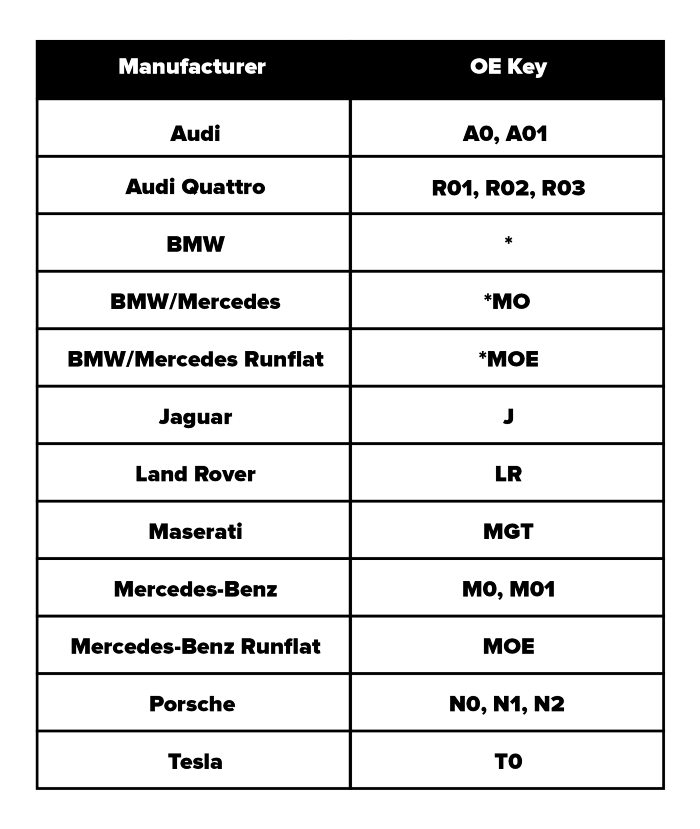If you’re in the auto industry, you’ve probably heard of homologated tyres, but what exactly are they?
Homologation refers to the process by which a tyre has been specifically developed with, and approved by, a premium vehicle manufacturer.
So, if a tyre is homologated, the vehicle manufacturer can be identified on the tyre sidewall via a short code. Each vehicle manufacturer each has their own specific code or OE key, to which some are easier to recognise and comprehend than others. For instance, some of the easier vehicle manufacturer codes include AO (Audi) and MO (Mercedes), whereas N1, for example, is the homologation code for Porsche.
The process of homologation
The process of homologation tyres is extremely painstaking, which can sometimes take up to three years to finalise. The process, in general, goes like this:
A tyre manufacturer, such as Pirelli, will design, extensively test and produce a new tyre model.
At this point, leading vehicle manufacturers will begin to test the custom-made tyre to determine its performance when fitted to their vehicles.
What car manufacturers are looking for is whether or not the generic tyre model can bring out the best characteristics and attributes of the vehicle. Hence, an extensive range of criteria including performance, grip, handling, and weight will be considered throughout this process.
After the comprehensive process of testing and retesting has been completed, feedback is provided by the car manufacturers to the tyre manufacturer, and the necessary modifications to maximise. performance are made.
At the end of the process, the homologated version of the tyre is then approved by the vehicle manufacturer, production begins and the tyre bearing the car manufacturer’s homologation code (or OE Key) is rolled out to the public.
Where can you find the tyre’s homologation or OE key?

Is there a noticeable difference with homologated tyres?
The best way to answer this is to pose an example.
Let’s say you’ve just bought a 2013 Aston Martin DB9. You purchased it for its sharp handling, strong in-gear acceleration and stiff suspension. And after two years, you need to replace its existing Original Equipment (OE) tyres. Your local Aston Martin service department recommends the Pirelli AMS-homologated 20” P Zero, which is approved by Aston Martin for your vehicle. You would be strongly advised to replace the existing tyres with the homologated tyre because you care about your vehicle’s performance, and you know that these tyres will maximise performance.
By going with the homologated tyres, you will notice the heightening of the performance features that you love about the vehicle. The handling will feel much tighter, the overall ride will feel more comfortable, and the road grip you feel will be superior to what you’d experience if you went with a mid-range or non-homologated tyre. Your vehicle will brake quicker and sharper, especially during wet seasons when stopping distances are extended.
Here’s a list of the world’s best known homologation codes, for the world’s leading premium vehicle manufacturers

Are homologated tyres safer than non-homologated tyres?
The same way you cannot begin to compare premium with budget tyres, you also can’t compare non-homologated and homologated tyres.
The latter, homologated tyres, have been specifically created and re-engineered, over multiple years, to enhance the unique characteristics of the vehicle, exactly as the vehicle manufacturer intended. Amongst the benefits of fitting homologated tyres to your vehicle are enhanced performance, enhanced safety and a ride that complements the vehicle type.
tyreconnect helps you find the homologated and original equipment tyres first. Our simple to use portal allows you to step your customer through the purchasing process and, if your customer has a premium vehicle, find their homologated tyre quickly.
Need an account? Signup free today here to begin browsing Australia’s largest range of tyres online.